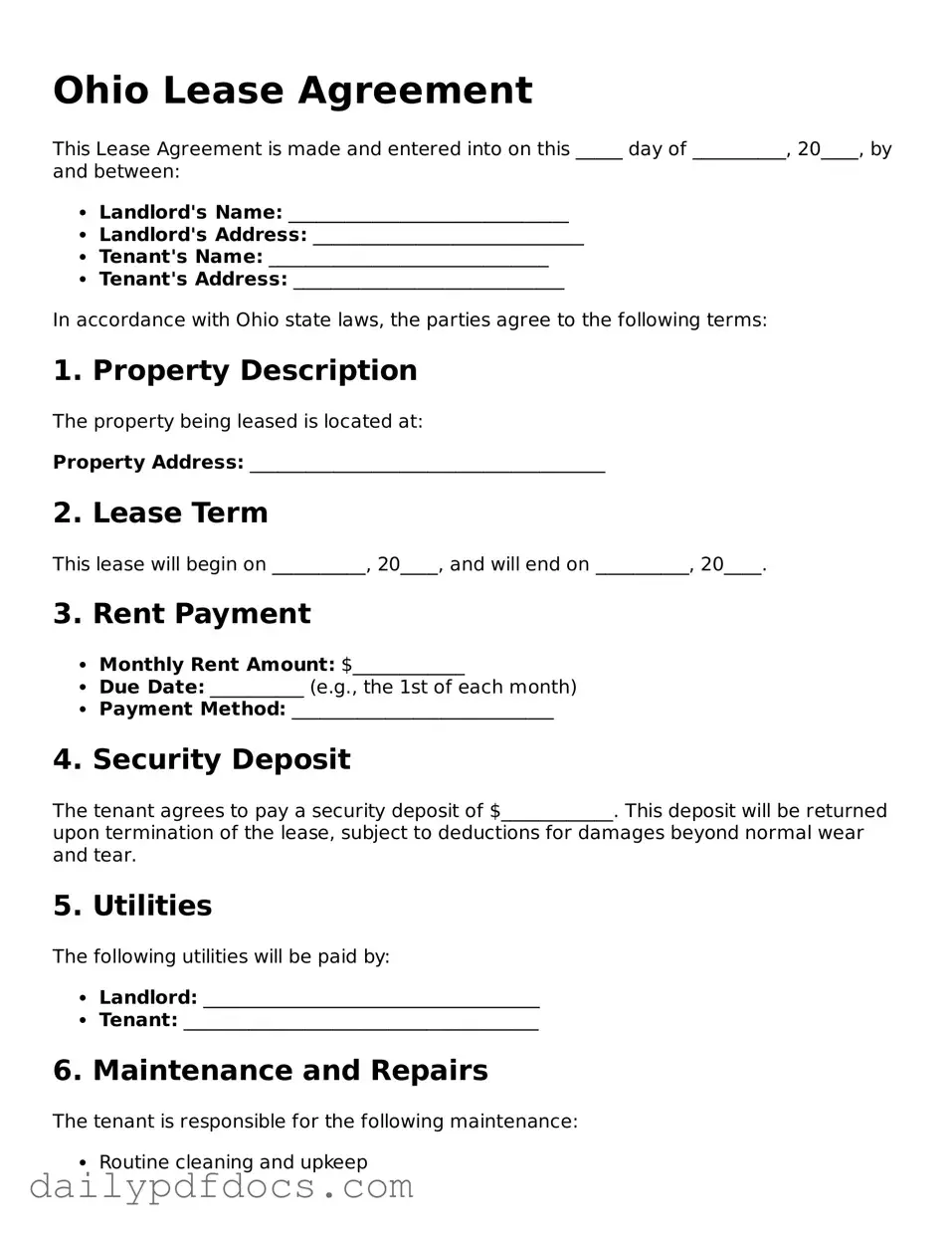Ohio Lease Agreement
This Lease Agreement is made and entered into on this _____ day of __________, 20____, by and between:
- Landlord's Name: ______________________________
- Landlord's Address: _____________________________
- Tenant's Name: ______________________________
- Tenant's Address: _____________________________
In accordance with Ohio state laws, the parties agree to the following terms:
1. Property Description
The property being leased is located at:
Property Address: ______________________________________
2. Lease Term
This lease will begin on __________, 20____, and will end on __________, 20____.
3. Rent Payment
- Monthly Rent Amount: $____________
- Due Date: __________ (e.g., the 1st of each month)
- Payment Method: ____________________________
4. Security Deposit
The tenant agrees to pay a security deposit of $____________. This deposit will be returned upon termination of the lease, subject to deductions for damages beyond normal wear and tear.
5. Utilities
The following utilities will be paid by:
- Landlord: ____________________________________
- Tenant: ______________________________________
6. Maintenance and Repairs
The tenant is responsible for the following maintenance:
- Routine cleaning and upkeep
- Immediate reporting of repairs needed
7. Termination
This lease may be terminated by either party under the following conditions:
- Written notice of at least ____ days.
- For cause, as defined by Ohio law.
8. Governing Law
This agreement shall be governed by the laws of the state of Ohio.
Signatures
By signing below, both parties agree to the terms outlined in this lease agreement.
Landlord Signature: _____________________________ Date: ___________
Tenant Signature: ______________________________ Date: ___________
